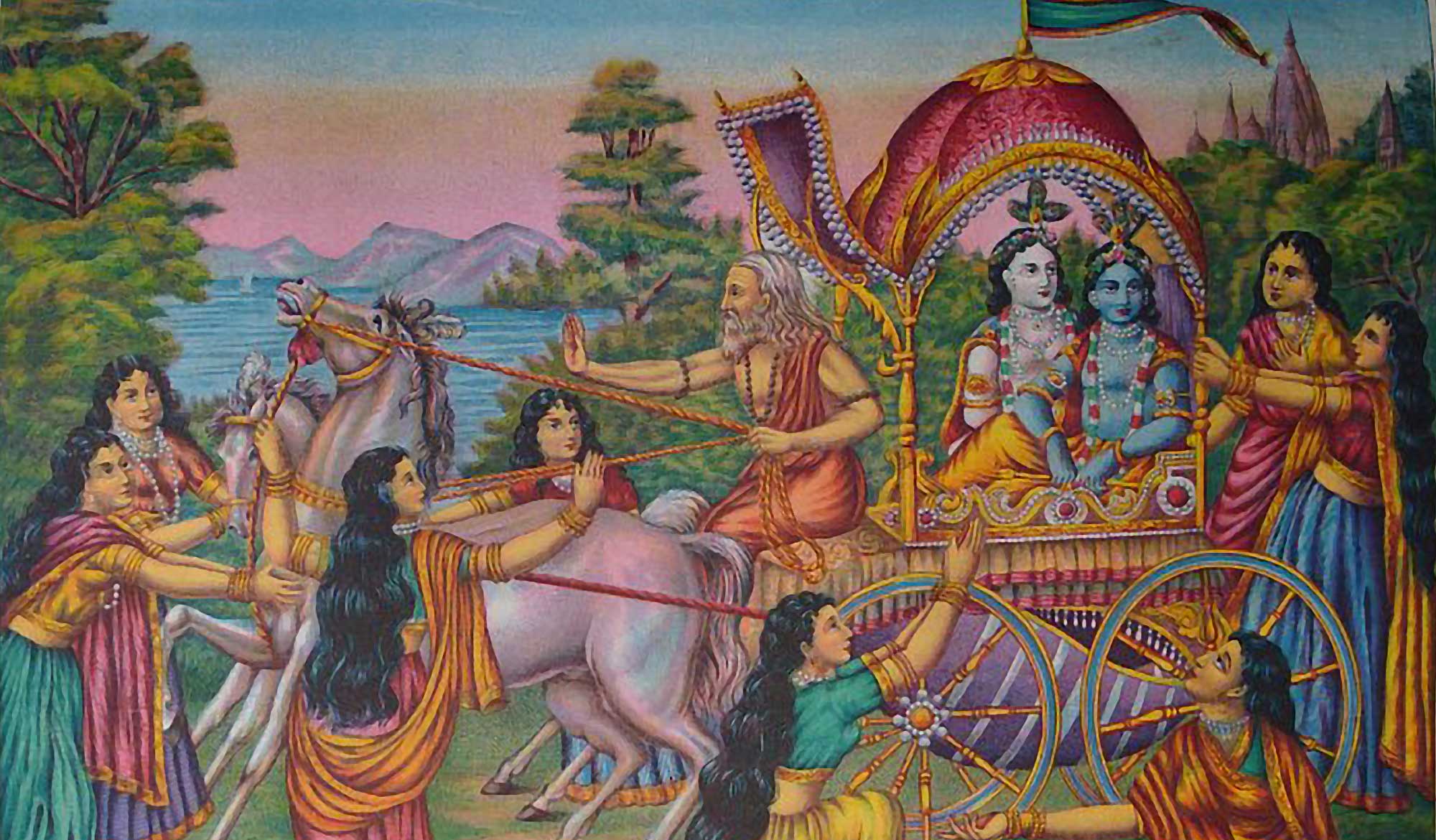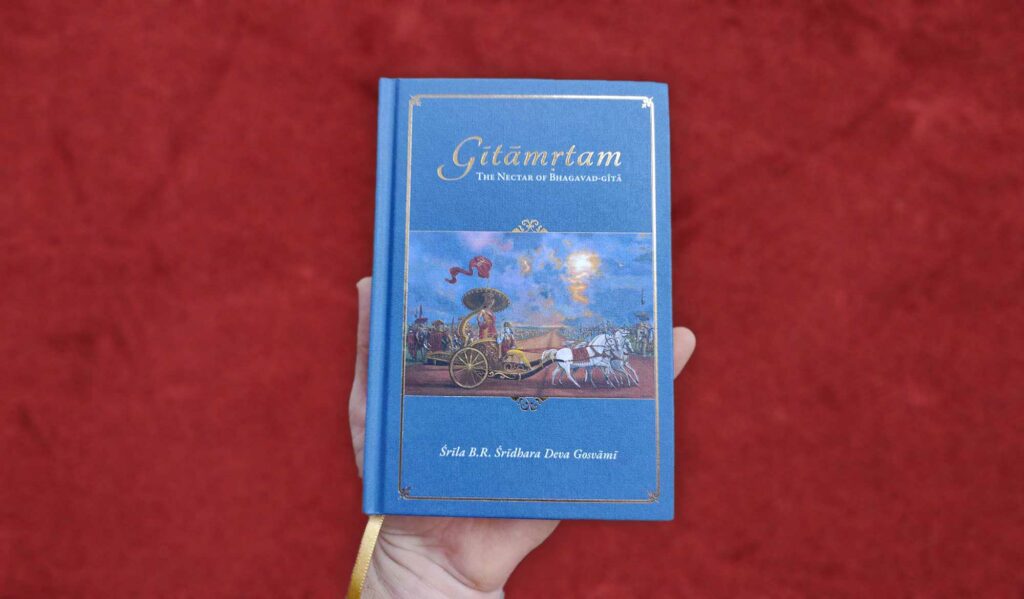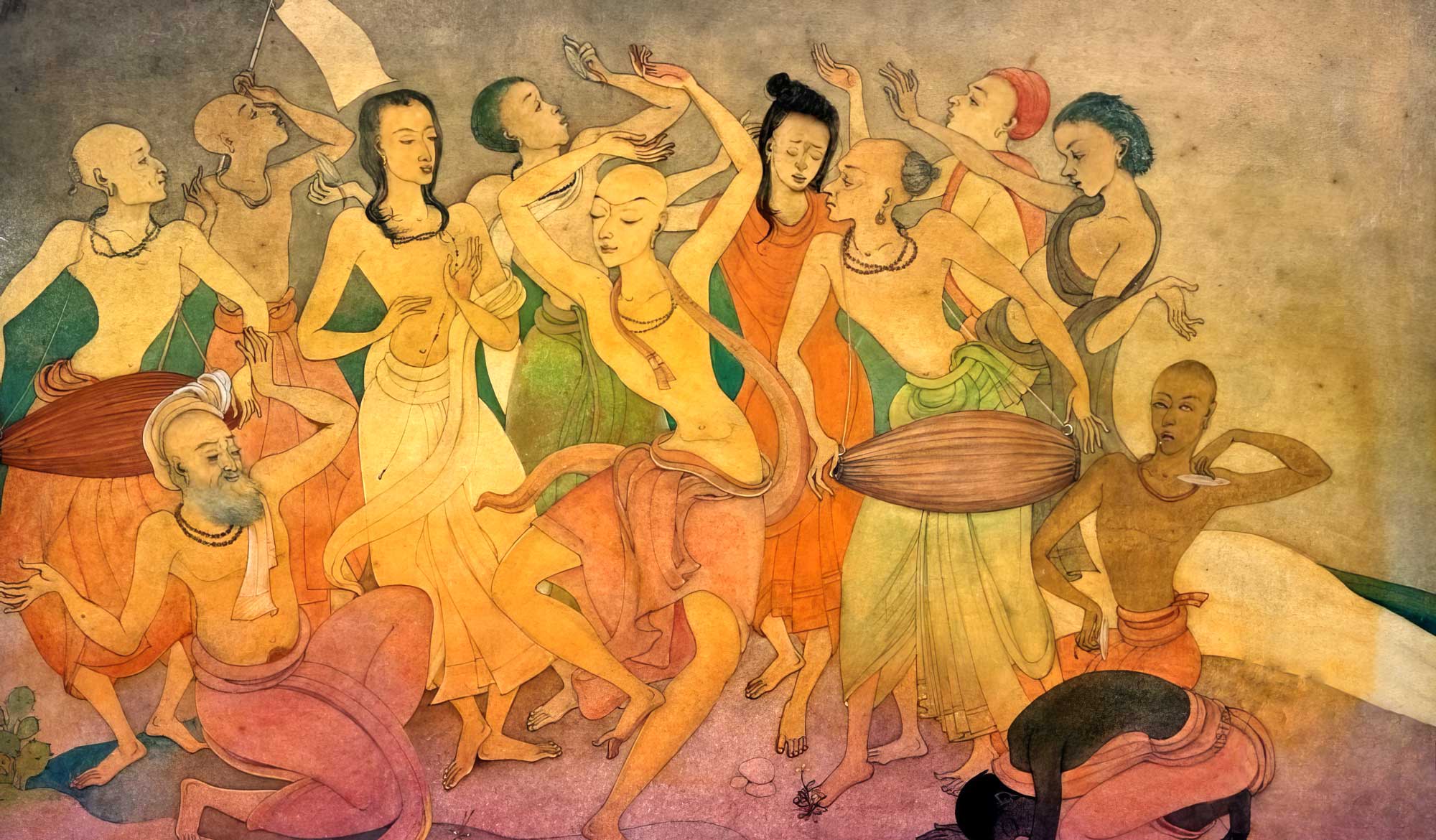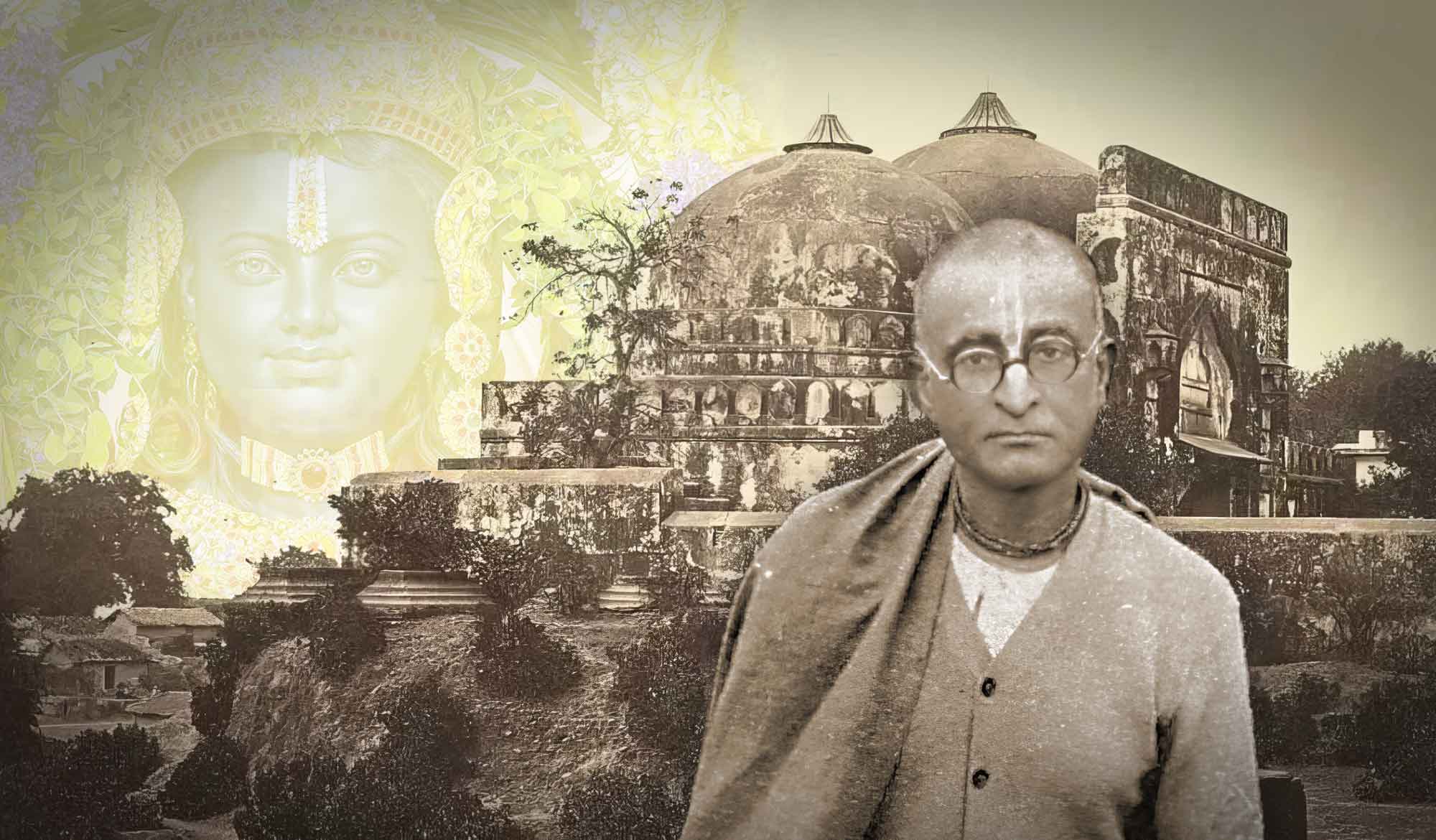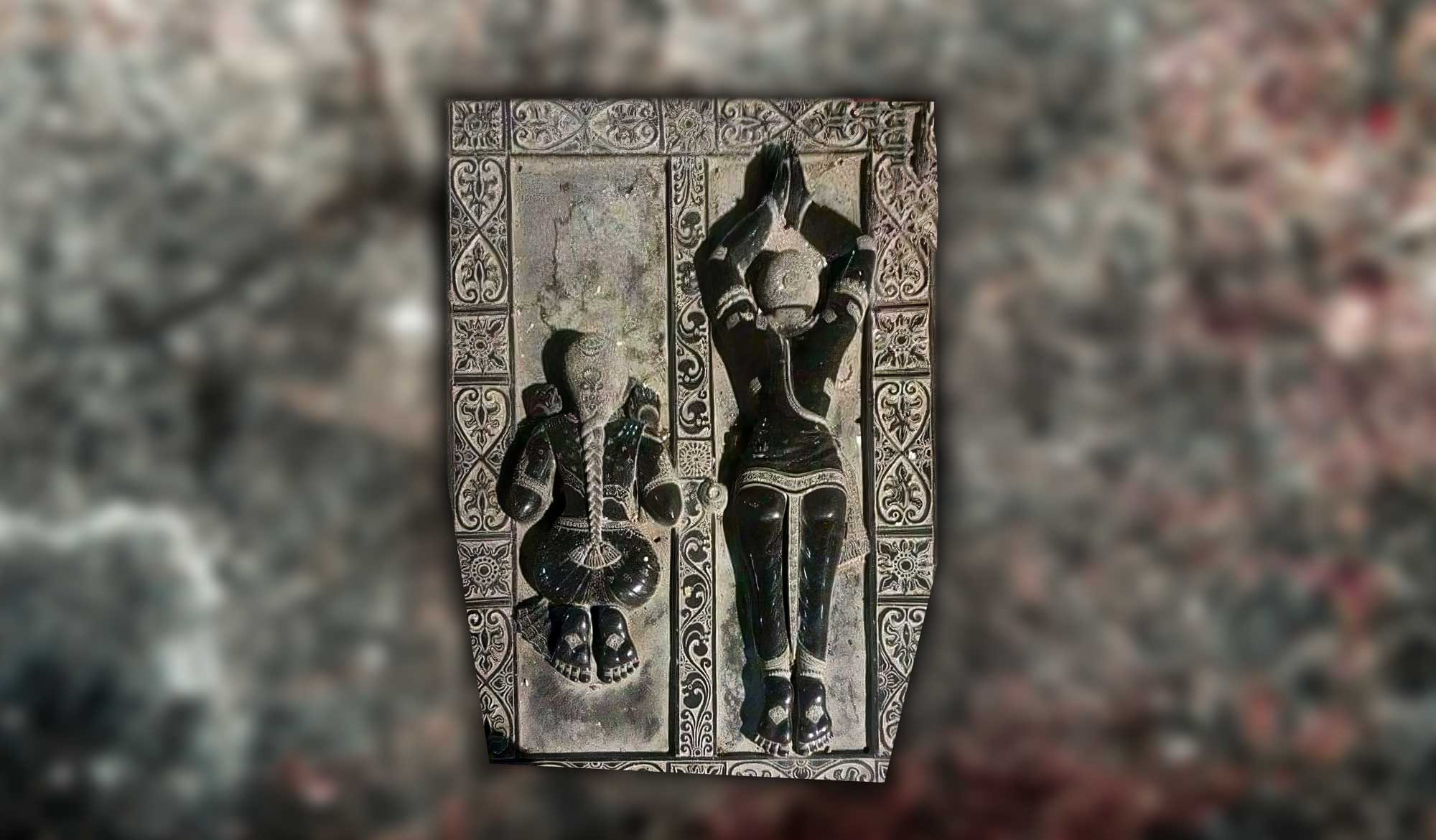Overview
This article, ‘Śrī Ratha Yātrāya Śrī Rūpānugānucintana,’ by Śrīla Śrīdhara Mahārāja, was first published in Śrī Gauḍīya Darśana magazine, Vol. 13, issue 1 in August 1969 the name of Śrī Kṛṣṇa Govinda Dāsa Adhikārī Bhakti-kovinda, and was written in response to certain maṭhas performing Ratha Yātrā in the dhāma.
This year in Śrī Puruṣottama, on the occasion of Nava-Kalevara, even though more devotees had gathered, the Ratha Yātrā festival was observed almost without any obstruction.
Gauḍīya philosophers have attained specific success in their perspective of this līlā since the premāvatārā, Bhagavān Śrī Kṛṣṇa Caitanyadeva, manifested His pastime of dancing and performing kīrtana at Śrī Jagannātha’s Ratha Yātrā. Taking refuge in Śrī Kṛṣṇa’s reassuring words, bhavatīnāṁ mad-āpanaḥ (“All of you will surely attain Me” – Bhāgavatam 10.82.44) from the Śrīmad Bhāgavata, the residents of Vraja relish a festival of bliss due to the gopī’s reunion with Śrī Kṛṣṇa after a long separation during the līlā of His journey from Śrī Nīlācala (Dvārakā) to Śrī Sundarācala (Śrī Vṛndāvana), representing the beginning of the victory of Śrī Vṛndāvana over Śrī Dvārakā-dhāma. Just like the satisfaction of eating after acute hunger, this great meeting in Śrī Vraja-dhāma with the Beloved of the gopīs, after an exceedingly long and most intense separation, awards an unprecedented and unique flood of vraja-rasa.
Some time later, rasika devotees, in order to improve their own bhajana, revealed the Ratha Yātrā līlā in many places in the material world to increase their bhajana along with giving mercy to the general populace. This is exemplified throughout Orissa and at Maheśa etc. in Bengal.
The performance of this līlā is not seen in Śrī Vṛndāvana. Akrūra brought a chariot from Mathurā to Vṛndāvana and took Śrī Kṛṣṇa-Balarāma there. The impression upon seeing that chariot inspires terrible apprehension in the hearts of the gopīs. Later, Kṛṣṇa sent Śrī Uddhava to Vṛndāvana, and he arrived there at dusk riding a chariot to collect news of the well-being of the gopīs. The next morning when they saw the chariot, the words of the gopīs showed great apprehension and painful agitation. “Has Akrūra come here again to gather up our flesh for the sake of his ghostly master (for the departed Kaṁsa’s śrāddha ceremony)?” Therefore, since the sight of a chariot creates excruciating pain in the hearts of the gopīs, the propagation of this līlā is not seen there.
Many mahātmās who are expert in bhajana are known to reside in Śrī Navadvīpa-dhāma, which is non-different from Vraja-maṇḍala. However, till today, none of these mahājanas has been seen to manifest the Ratha-Yātrā līlā in order to try and increase their own bhajana. Even in Śrī Jagannātha-kṣetra, which exists as a part of Śrī Navadvīpa-dhāma (at Śaraḍāṅgā, where a Deity of Śrī Jagannātha presides), no tradition of performing Śrī Ratha Yātrā is seen there.
In this situation, the question is this – is this kind of endeavour to gather people in Śrī Navadvīpa-Māyāpura, the hidden Vṛndāvana, favourable to either bhajana or preaching? Is it possible for those who engage in bhajana in Śrī Dhāma, who cultivate bhakti under the shelter of sambandha-jñāna, to see or attempt to see Dvārakā here and there within Śrī Dhāma? Consider this – by arranging a Ratha Yātrā, can the chariot be taken from what is perceived by a mahātmā to be Gokula or Govardhana within Śrī Navadvīpa-dhāma, to Śaraḍāṅgā in Jagannātha-kṣetra, or to Harihara-kṣetra?
Ṭhākura Bhaktivinoda explained the point of sambandha-kauśala (related expertise) upon entering the dhāma. Bhaktivinoda Ṭhākura organised fairs etc. and revealed many other endeavours to gather people to publicise Śrīman Mahāprabhu’s birthplace which were favourable for preaching, but he did not introduce Śrī Ratha Yātrā. Even amongst the great endeavours, and the extensive and various ways of propagating the teachings of Gaura by the world-preceptor, Bhagavān Śrī Bhaktisiddhānta Sarasvatī Prabhupāda, the manifestation of Śrī Ratha Yātrā in Śrī Gaura-dhāma was not shown. Isn’t the reason for this a matter of inquiry for the pure devotees who are interested in bhajana?
Of course, on the maryādā-mārga (the path of proper behaviour), the travel pastimes of the Deities on chariots at any time here in the dhāma are inapplicable. As to why this is, Śrīla Prabhupāda’s own words are, pūjala rāga-patha gaurava-bhaṅge (‘the path of spontaneous devotion is worshipped in a mood of awe and reverence’).
In relation to the ideal of Ratha Yātrā according to the path revealed by Śrīman Mahāprabhu, Śrī Rūpa-pāda’s perspective is this:
priyaḥ so’yaṁ kṛṣṇaḥ saha-cari kuru-kṣetra-militas
tathāhaṁ sā rādhā tad idam ubhayoḥ saṅgama-sukham
tathāpy antaḥ-khelan-madhura-muralī-pañcama-juṣe
mano me kālindī-pulina-vipināya spṛhayati
“My dear friend, this is the same beloved Kṛṣṇa meeting Me here at Kurukṣetra. I am also that same Rādhā, and we Both feel the same joy of union –and yet My mind yearns for the forest on the bank of the Kālindī where the fifth note of His flute sweetly plays within My heart.” (Caitanya-caritāmṛta. Madhya-līlā 1.76)
This is the perspective that increases the bhajana of those who are Śrī Rūpānugas.
Related Articles and Books
- 📖 The Authorized Sri Caitanya Saraswata Parampara (Book) by Śrīla Bhakti Gaurava Narasiṅgha Mahārāja
- The Internal Meaning of Ratha Yātrā and Nāma Bhajana by Śrīla Bhakti Pramoda Purī Mahārāja
- The Vṛndāvana Express and the Navadvīpa Special by Śrīla B.R. Śrīdhara Deva Gosvāmī
- Ratha Yātrā in Navadvīpa by Swami B.G. Narasiṅgha Mahārāja
- A Brief Response to Ratha Yatra in Navadvīpa by Swami B.G. Narasiṅgha Mahārāja
- The Rāga-Patha is Above All by Śrīla Bhakti Gaurava Narasiṅgha Mahārāja
- Rūpānuga Bhajana by Śrīla Bhakti Gaurava Narasiṅgha Mahārāja
- The Standard for Higher Līlā by Swami B.V. Giri
Further Reading
Pilgrimage with Swami Narasiṅgha – Part 7: Keśī Ghāṭa
Continuing with our pilgrimage series, this week Śrīla Narasiṅgha Mahārāja takes us to Keśī Ghāṭā where he tells us about Madhumaṅgala’s meeting with the Keśī demon, what Keśī represents, and how Śrīla Prabhupāda almost acquired Keśī Ghāṭa. Mahārāja also narrates his own experience. This article has been adapted from a number of talks and articles by Narasiṅgha Mahārāja.
Prema Dhāma Deva Stotram with the Narasiṅgha Sevaka Commentary – Verses 61-65
In verses 61 to 65 of 'Prema Dhāma Deva Stotram', Śrīla Śrīdhara Mahārāja narrates the pastime of Śrī Caitanya at Caṭaka Parvata In Purī and explains how the scriptures produced by Brahmā and Śiva are ultimately searching for the personality of Mahāprabhu who is merciful too all jīvas, no matter what their social position.
Prabhupāda Śrīla Sarasvatī Ṭhākura’s Visit to Ayodhyā
With the forthcoming observance of Śrī Rāma Navamī, we present 'Prabhupāda Śrīla Sarasvatī Ṭhākura’s Visit to Ayodhyā' written by Śrīla Bhaktisiddhānta Sarasvatī Ṭhākura Prabhupāda from The Gaudīyā magazine, Vol 3. Issue 21/ In December 1924, after visiting Benares and Prāyāga, Sarasvatī Ṭhākura visited the birth-site of Śrī Rāmācandra in Ayodhyā.
Śaraṇāgati – The Only Path to Auspiciousness
In this article, 'Śaraṇāgati - The Only Path to Auspiciousness', Dhīra Lalitā Dāsī analyses the process of śaraṇāgati (surrender) beginning with śraddhā (faith). She also discusses the role of śāstra and the Vaiṣṇava in connection with surrender.
Pilgrimage with Swami Narasiṅgha – Part 7: Keśī Ghāṭa
Continuing with our pilgrimage series, this week Śrīla Narasiṅgha Mahārāja takes us to Keśī Ghāṭā where he tells us about Madhumaṅgala’s meeting with the Keśī demon, what Keśī represents, and how Śrīla Prabhupāda almost acquired Keśī Ghāṭa. Mahārāja also narrates his own experience. This article has been adapted from a number of talks and articles by Narasiṅgha Mahārāja.
Prema Dhāma Deva Stotram with the Narasiṅgha Sevaka Commentary – Verses 61-65
In verses 61 to 65 of 'Prema Dhāma Deva Stotram', Śrīla Śrīdhara Mahārāja narrates the pastime of Śrī Caitanya at Caṭaka Parvata In Purī and explains how the scriptures produced by Brahmā and Śiva are ultimately searching for the personality of Mahāprabhu who is merciful too all jīvas, no matter what their social position.
Prabhupāda Śrīla Sarasvatī Ṭhākura’s Visit to Ayodhyā
With the forthcoming observance of Śrī Rāma Navamī, we present 'Prabhupāda Śrīla Sarasvatī Ṭhākura’s Visit to Ayodhyā' written by Śrīla Bhaktisiddhānta Sarasvatī Ṭhākura Prabhupāda from The Gaudīyā magazine, Vol 3. Issue 21/ In December 1924, after visiting Benares and Prāyāga, Sarasvatī Ṭhākura visited the birth-site of Śrī Rāmācandra in Ayodhyā.
Śaraṇāgati – The Only Path to Auspiciousness
In this article, 'Śaraṇāgati - The Only Path to Auspiciousness', Dhīra Lalitā Dāsī analyses the process of śaraṇāgati (surrender) beginning with śraddhā (faith). She also discusses the role of śāstra and the Vaiṣṇava in connection with surrender.


